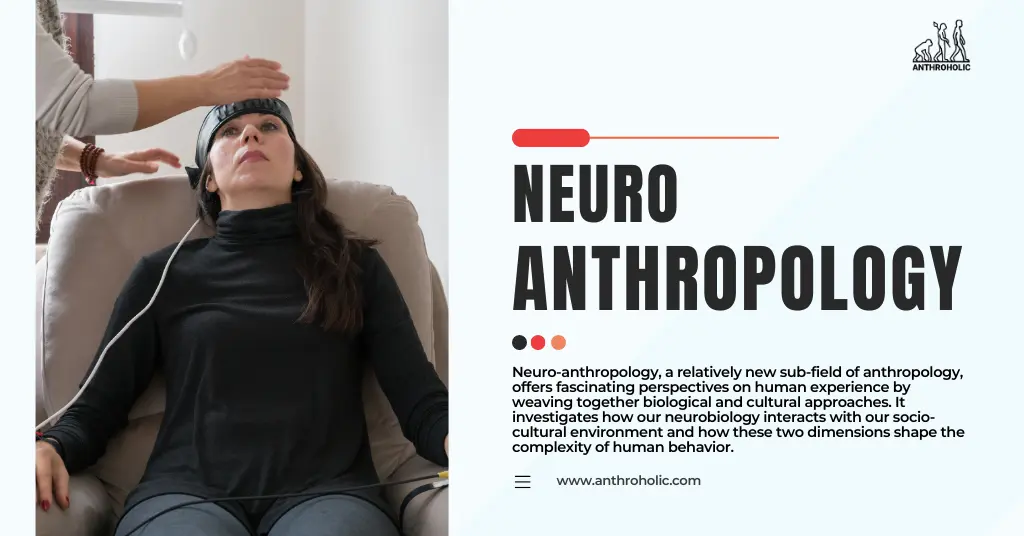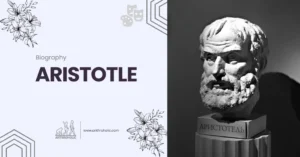AI Answer Evaluation Platform Live Now. Try Free Answer Evaluation Now
Neuro-Anthropology
Neuro-anthropology, a relatively new sub-field of anthropology, offers fascinating perspectives on human experience by weaving together biological and cultural approaches. It investigates how our neurobiology interacts with our socio-cultural environment and how these two dimensions shape the complexity of human behavior. An integration of neuroscience and cultural anthropology, neuro-anthropology provides an enriched understanding of human nature that overcomes reductionist approaches of single-discipline perspectives [1].

Historical Evolution
The term neuro-anthropology was first coined in the 1970s, but its real development as a field only began in the early 2000s, particularly with the advent of technologies like functional Magnetic Resonance Imaging (fMRI) that allowed detailed study of the human brain in vivo.
- The 1970s: The field was first mentioned by Laughlin and d’Aquili [2].
- The 2000s: A significant growth occurred with the advent of brain imaging technologies.
Methodological Approaches
Neuro-anthropology employs a diverse range of research methodologies that combine both qualitative and quantitative data.
Fieldwork and Observation
Anthropologists have traditionally relied on ethnographic methods like participant observation and in-depth interviews. They allow researchers to immerse themselves in the cultural contexts they are studying, providing a depth of understanding that other methods often lack [3].
Brain Imaging
On the other hand, neuroscientists often use brain imaging techniques such as fMRI, Positron Emission Tomography (PET), and Electroencephalogram (EEG). These techniques provide quantitative data about brain activity under various conditions and can be used to explore links between brain function and cultural phenomena.
Combining Approaches
A unique aspect of neuro-anthropology is the combination of these approaches. This integration allows researchers to understand how cultural practices can shape brain development and function, and conversely, how our neurobiology influences our engagement with cultural phenomena [4].
Key Areas of Interest
Neuro-anthropology addresses various facets of human experience:
- Cognition and Culture: The exploration of how culturally shaped cognitive processes affect brain development and function.
- Emotion and Expression: The study of how cultural context influences emotional experiences and their neural underpinnings.
- Body and Movement: The examination of culturally specific body movements (such as dance or martial arts) and their impact on the nervous system.
Key Findings in Neuro-Anthropology
Numerous studies in the field have illuminated how culture and brain mutually influence each other. A few prominent ones are:
- Meditation and the Brain: Studies have shown that meditation, a practice deeply embedded in various cultures, can significantly alter brain structure and function, suggesting a profound mind-body link [5].
- Bilingualism and Cognitive Flexibility: Research has indicated that bilingual individuals demonstrate superior cognitive flexibility, hinting at a potential link between cultural experience (language exposure) and brain development [6].
- Cultural Variation in Pain Perception: Cross-cultural studies have found that cultural factors significantly influence how individuals perceive and express pain, underscoring the interaction between socio-cultural context and neurobiological processes [7].
Implications and Applications of Neuro-Anthropology
The growing body of research in neuro-anthropology has important implications for various sectors, including healthcare, education, policy-making, and technology design.
Healthcare and Clinical Psychology
Recognizing how cultural practices and values can impact neurobiology can enhance the effectiveness of interventions in healthcare and clinical psychology. Understanding the neural underpinnings of behaviors such as meditation and mindfulness can contribute to the design of therapies for mental health conditions. Similarly, cross-cultural differences in pain perception can inform pain management strategies, leading to more personalized care.
Education and Learning
Educational practices can benefit from insights into how cultural context influences learning and cognitive development. This understanding can lead to the design of educational strategies that capitalize on the brain’s capacity for plasticity, leading to improved learning outcomes.
Public Policy
Neuro-anthropological research can also inform public policy, particularly in areas like public health and education. By understanding the interaction between brain function and cultural context, policymakers can develop interventions that work with, rather than against, cultural practices and values.
Technology and AI
In the age of AI and machine learning, understanding the intricacies of human cognition from a cultural perspective can inform the development of more human-centered technologies. Insights from neuro-anthropology can contribute to the design of more culturally sensitive and adaptive AI systems [10].
Neuro-anthropology: A Pathway Towards Greater Understanding
The interdisciplinary nature of neuro-anthropology offers a unique perspective on understanding human experience. By bridging the gap between neuroscience and cultural anthropology, it provides a nuanced view of the human condition that neither discipline can achieve alone.
There is much potential for growth in this relatively new field. With the advancements in neuroscience and cultural studies, it is only a matter of time before we uncover more about the fascinating dance between brain function and culture. By embracing this integrated approach, we can enrich our understanding of humanity and harness these insights to create more effective interventions in various sectors.
Challenges and Future Directions
Despite its significant potential, neuro-anthropology faces some challenges:
- Limited interdisciplinary collaboration: Despite strides, there remains resistance in both anthropology and neuroscience towards integration.
- Ethical considerations: Brain imaging studies often raise privacy and consent issues.
Despite these challenges, the future of neuro-anthropology looks promising. As technology advances and interdisciplinary collaboration becomes more accepted, the potential for further insights into the intricate dance between our brains and culture will only increase.
Conclusion
Neuro-anthropology represents an exciting convergence of biology and culture, a rich tapestry interwoven with threads from diverse disciplinary traditions. By embracing the complexities of human nature and recognizing the interplay between our biological underpinnings and cultural contexts, this innovative field provides a nuanced understanding of what it means to be human.
References
[1] Lende, D. H., & Downey, G. (2012). The Encultured Brain: An Introduction to Neuroanthropology. MIT Press.
[2] Laughlin, C. D., & d’Aquili, E. G. (1974). Biogenetic Structuralism. Columbia University Press.
[3] Geertz, C. (1973). The Interpretation of Cultures. Basic Books.
[4] Roepstorff, A. (2001). Brains in Scanners: An Umwelt of Cognitive Neuroscience. Semiotica, 134(1/4), 747-765.
[5] Luders, E., Toga, A. W., Lepore, N., & Gaser, C. (2009). The underlying anatomical correlates of long-term meditation: Larger hippocampal and frontal volumes of gray matter. Neuroimage, 45(3), 672-678. https://doi.org/10.1016%2Fj.neuroimage.2008.12.061
[6] Bialystok, E., & Barac, R. (2012). Emerging bilingualism: Dissociating advantages for metalinguistic awareness and executive control. Cognition, 122(1), 67-73.
[7] Nichter, M. (2008). Global health: Why cultural perceptions, social representations, and biopolitics matter. University of Arizona Press.




